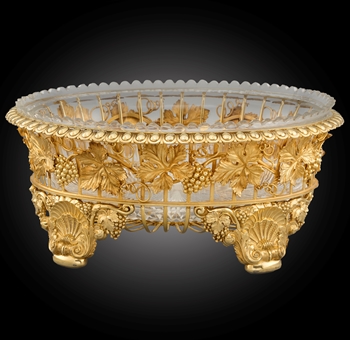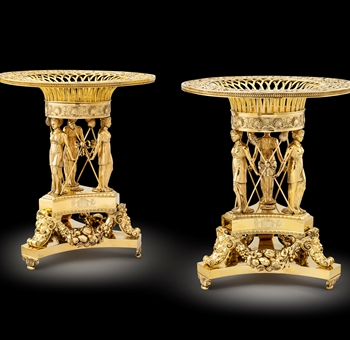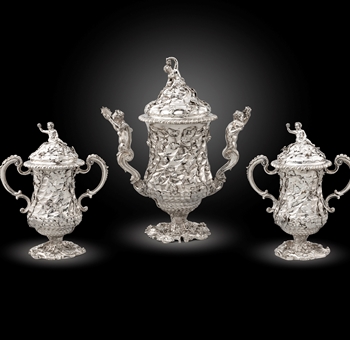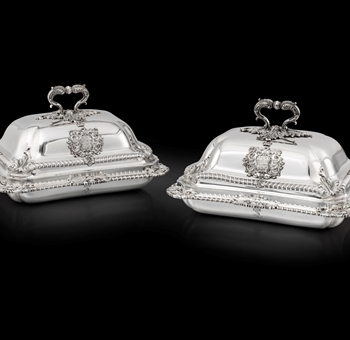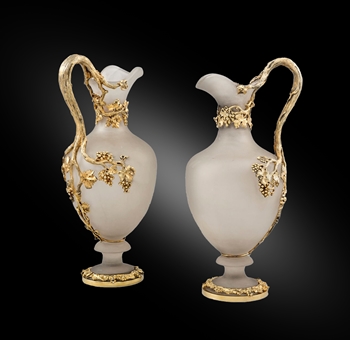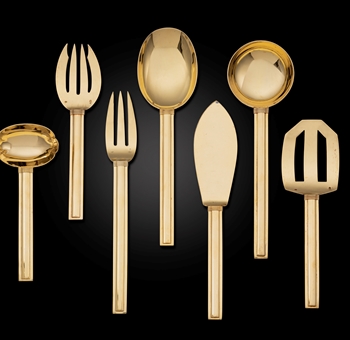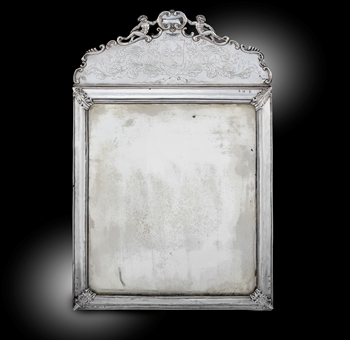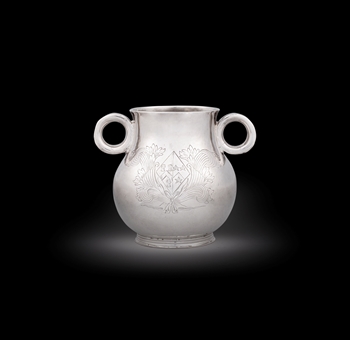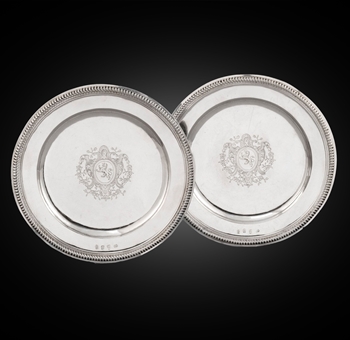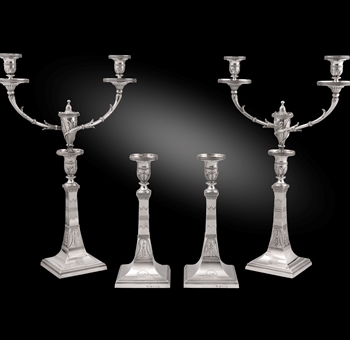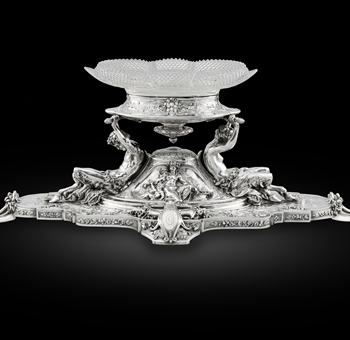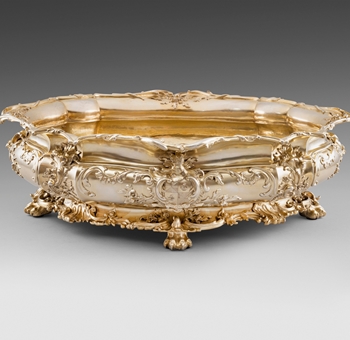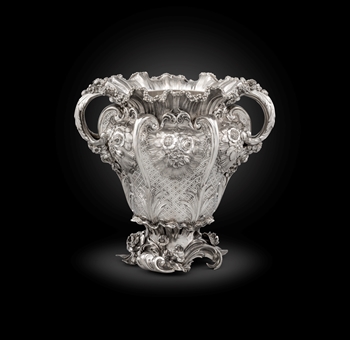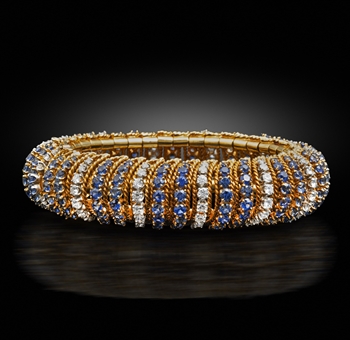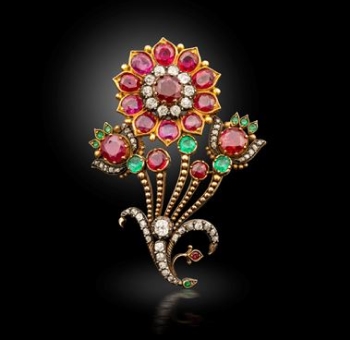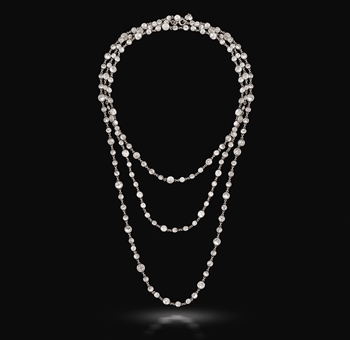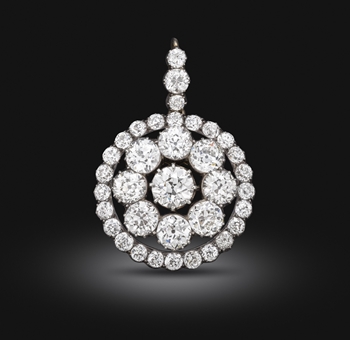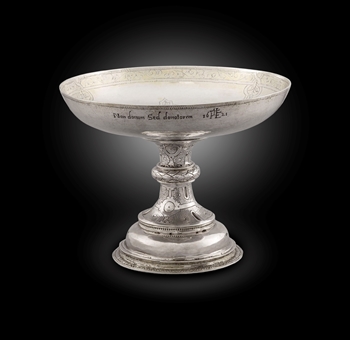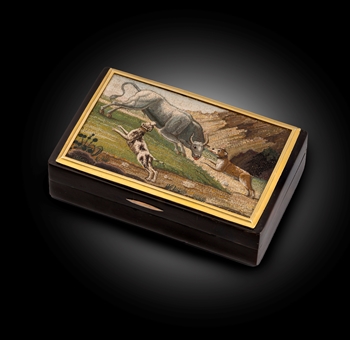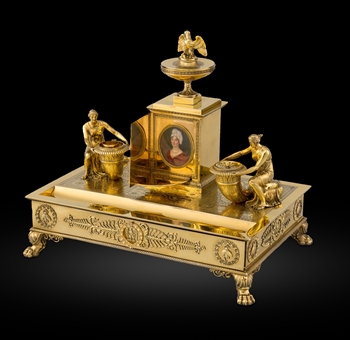 BACK TO LIST
BACK TO LIST
The Jerningham Wine Cooler
Koopman Rare Art proudly presents, the largest piece of Sterling silver commissioned since the creation of the Jerningham - Kandler cistern, London, 1734, residing in St Petersburg at the Hermintage Museum.
This wine cistern is modelled after the George II example made in London, 1734 by Charles Kandler. Its inspiration can be traced to a sketch of the design honouring the wine god Bacchus, executed by the antiquarian and engraver George Vertue (1684-1756) - the wax models for the figures were executed by the Flemish-born English sculptor John Michael Rysbrack (1694–1770). The original cistern, now in the Hermitage Museum, St. Petersburg, was the work of the silversmith Charles Frederick Kandler (act. 1720–1770s). When this remarkable piece was finally ready in 1734, Meynell had changed his mind and Jernegan found himself stuck with the extravagant object for which he failed to find a buyer. Offered initially as first price in a lottery of 1739, the wine cistern subsequently entered the collection of Empress Anne of Russia the following year.
The wine cooler of oval form, waisted below the rim, with large oval medallions. The bowl rests on four seated panthers, teeth bared, each with one paw on a bunch of grapes. The panthers each with collars and are tied to the bowl with chains. Heavy S-scroll handles with herms of a faun and a bacchante, both holding bunches of grapes with vines lain across their hips. The upper section of the scrolls has a profiled edge in comparison to the curves of lower - forming the base or stand of the herms – and are ornamented with acanthus leaves. Attached to the sides of the bowl are relief bacchic scenes with putti. To one side, putti surround a chariot pulled by panthers in which sit two more putti, one of them the young Bacchus, with a figure of Cupid hovering above; the other shows putti dancing, flanked by a group of putti fighting with others drinking and playing with a panther. All parts of the wine cooler were cast from moulds and then raised and chased, before being soldered together. Bolts fasten together the larger parts: the handles to the bowl, the bowl to the panthers, etc. The medallions are much thicker than the side walls of the bowl itself, as to accommodate decorated of very high relief.




